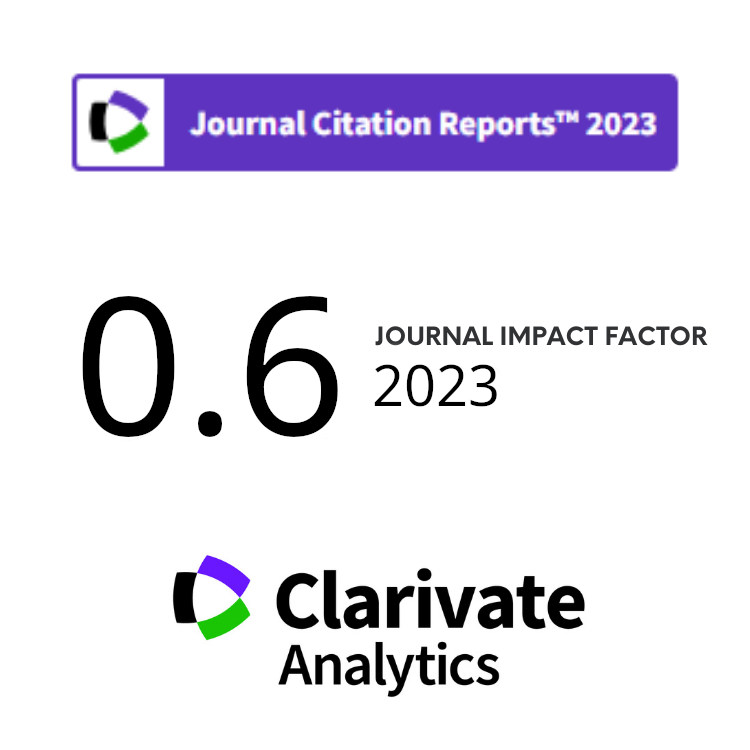Seismic Risk Analysis of the Serpong Nuclear Complex and the RSG-GAS Reactor Using Microseismic Methods
Abstract
Keywords
Full Text:
PDFReferences
I. P. Susila, A. Yuniarto and C. Cahyana, Atom Indones. 43 (2017) 87. (in Indonesian)
IAEA, IAEA Safety Standards: Seismic Hazards in Site Evaluation for Nuclear Installations, No. SSG-9, IAEA, Vienna (2010) 80.
S. Pujiarta, P. Busono, A. Azis et al., Report on the Results of the Structural Strength Examination of the G.A. Siwabessy Reactor Building, National Nuclear Energy Agency, Serpong (2019) 1. (in Indonesian)
Y. Sanjaya, Majalengka's Baribis Fault Could Cause Earthquakes Like Cimandiri's Cianjur Fault, Here's the Explanation. https://radarcirebon.disway.id/read/145458/sesar-baribis-majalengka-bisa-gempa-darat-seperti-sesar-cimandiri-cianjur-begini-penjelasannya. Retrieved in February (2023). (in Indonesian)
United States Geological Survey, Earthquake Hazard Program - Search Earthquake Catalog.. https://earthquake.usgs.gov/earthquakes/search/. Retrieved in February (2023).
National Earthquake Center, Earthquake Map Book 2017, Ministry of Public Works and Housing Indonesia, Jakarta (2017) 1. (in Indonesian)
A. M. Al-Amri, K. Abdelrahman and M. S. Fnais, Arabian J. Geosci. 15 (2022) 1.
P. C. Basu, Nucl. Eng. Des. 352 (2019) 110140.
BAPETEN, Power Reactor Site Evaluation for Geotechnical Aspects and Power Reactor Foundations, BAPETEN Chairman's Regulation No. 4 of 2008, BAPETEN (2008). (in Indonesian)
Herak, Recent applications of ambient vibration measurements in Croatia, in Increasing Seismic Safety by Combining Engineering Technologies and Seismological Data, NATO Science for Peace and Security Series C: Environmental Security, United States (2008) 281.
M. Herak, Geofiz. 28 (2011) 21.
M. A. Hadianfard, R. Rabiee and A. Sarshad, Struct. Eng. Mech. 55 (2015) 965.
IAEA, IAEA Safety Standard: Safety Classification of Structures, Systems and Components in Nuclear Power Plants, No. SSG-30, IAEA, Vienna (2014) 1.
IAEA, IAEA Safety Standard: Evaluation of Seismic for Exixting Nuclear Installations, No. NS-G-2.13, IAEA, Vienna (2009) 1.
IAEA, IAEA Safety Standards Series: Seismic Design and Qualification for Nuclear Power Plants, No. NS-G-1.6 (2003) 1.
IAEA, IAEA Safety Standard: Ageing Management for Research Reactors, No. SSG-10 (Rev. 1), IAEA, Vienna (2023) 1.
Y. Nakamura, E. D. Guler and J. Saita, Dynamic characteristics of leaning tower of pisa using microtremor, 25th Japan Conference on Earthquake Engineering (1999) 921.
M. A. Hadianfard, M. Jahangiri and S. Shojaei, Soil Dyn. Earthquake Eng. 162 (2022) 107492.
M. Jahangiri, M. A. Hadianfard and S. Shojaei, Meas. 201 (2002) 111750.
P. Dunbar, H. McCullough, G. Mungov et al., Geomatics Nat. Hazards Risk 2 (2011) 305.
Y. Nakamura, Method for Dynamic Characteristics Estimation of Subsurface using Microtremor on the Ground Surface, in: Quarterly Report of Railway Technical Research Institute Vol. No.1, Japan (1989) 25.
H. Arai and K. Tokimatsu, Bull. Seismol. Soc. Am. 95 (2005) 1766.
M. Khanmohammadi, M. Eshraghi, S. Behboodi et al., J. Earthquake Eng. 26 (2021) 6015.
K. Konno and T. Ohmachi, Bull. Seismol. Soc. Am. 88 (1998) 228.
Y. Nakamura, E. D Gurler, J. Saita et al., Vulnerability Investigation of Roman Colosseum using Microtremor, 12th World Conference on Earthquake Engineering NZ 2660/6/A (2000) 1.
S. S. Arifin, B. S. Mulyatno, Marjiyono et al., Jurnal Geofisika Eksplorasi 2 (2014) 30. (in Indonesian)
Daryono, Jurnal Kebencanaan Indonesia 2 (2009) 456. (in Indonesian)
Saaduddin, Sismanto, and Marjiyono, Proc. Seminar Nasional Kebumian 8 (2015) 459. (in Indonesian)
M. D. Trifunac and M. I. Todorovska, Soil Dyn. Earthquake Eng. 19 (2000) 253.
M. R. Gallipoli, M. Mucciarelli, S. Gallicchio et al., Earthquake Spectra 20 (2004) S81.
E. Haghshenas. P. Y Bsard, N. Theodulidis et al., Bull. Earthquake Eng. 6 (2008) 75.
M. Mucciarelli, M. R. Gallipoli and M. Arcieri, Bull. Seismol. Soc. Am. 93 (2003) 1407.
A. Gosar, Nat. Hazards Earth Syst. Sci. 10 (2010) 761.
A. Gosar, J. Rošer, B. Š. Motnikar et al., Bull. Earthquake Eng. 8 (2010) 571.
M. Rudiger, M. Julian and S. Jurgen, Design and Construction of Nuclear Power Plants, Ernst & Sohn, Berlin (2013) 1.
BSN, Earthquake resistance planning procedures for building and non-building structures, 1726:2019 SNI, BSN, Jakarta (2019) 1. (in Indonesian)
T. Sato, Y. Nakamura and J. Saita, The Change of the Dynamic Characteristics using Microtremor, The 14th World Conference on Earthquake Engineering (1999) 12.
European Commission - Research General Directorate, Guidelines For the Implementation Technique on Ambient Vibrations of the H/V Spectral Ratio Technique on Ambient Vibrations, Project No. EVG1-CT-2000-00026 SESAME, European Commission - Research General Directorate, Brussels (2004) 62.
E. R. Iswanto, Y. Indrawati and T. A. Riyanto, Eksplorium 40 (2019) 105. (in Indonesian)
K. Kanai and T. Tanaka, Bull. Earthquake Res. Inst. 39 (1961) 97.
R. Prastowo and U. N. Prabowo, Angkasa Jurnal Ilmiah Bidang Teknologi 9 (2017) 83. (in Indonesian)
M. Zuhdi, M. Taufik, S. Ayub et al., Introduction to Geophysics, Einstein College, Mataram (2021) 1. (in Indonesian)
Interatom, Construction Document of Civil Reactor RSG-GAS (Limited Document), Interatom, Bergisch Gladbach (1983) 1.
DOI: https://doi.org/10.55981/aij.2025.1596
Copyright (c) 2025 Atom Indonesia

This work is licensed under a Creative Commons Attribution-NonCommercial-ShareAlike 4.0 International License.











